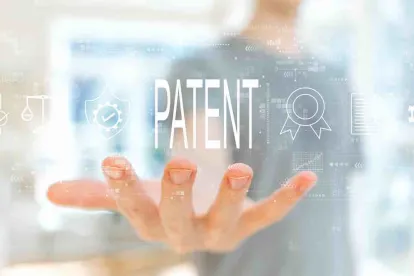Last week, the Enlarged Board of Appeal (EBA) confirmed in G4/19 that a European patent application can be refused for ‘double patenting’ despite the absence of an explicit double patenting provision in the European Patent Convention.
Double patenting, as a concept, seeks to prevent applicants from obtaining multiple patents in the same jurisdiction claiming the same subject-matter. In addition to the administrative inefficiencies such practices would place on the European Patent Office (EPO), allowing double patenting could tempt abuse of royalty arrangements or other matters relating to the licensing/transfer of rights for a particular invention to the detriment of third parties. In recognition of this concept, the EPO will usually issue an objection where a claim has identical scope to that of a previous granted claim covering the same territories. However, because the European Patent Convention (EPC) does not explicitly refer to double patenting, it has been unclear as to whether a European patent application can actually be refused on the ground of double patenting.
The question of double patenting was therefore referred to the EBA to determine whether, and under what provision, an application could be refused due to double patenting. The EBA has now confirmed that the EPO can rely upon Article 125 EPC as the basis to refuse applications for unallowable double patenting, which specifies that:
In the absence of procedural provisions in this Convention, the European Patent Office shall take into account the principles of procedural law generally recognised in the Contracting States.
In its decision, the EBA held that double patenting was a principle of procedural law within the meaning of this provision, and thus Article 125 EPC provides the source for the prohibition on double patenting. The EBA additionally held that the above did not depend on the relative filing dates of the two European patent applications, but instead deemed that i) two EP applications filed on the same day, ii) a divisional application and its parent, and iii) a later EP application claiming priority to an earlier EP application should all be treated the same in this regard.
As a result of the decision, examiners at the EPO now have the mandate to refuse an EP patent application according to one of scenarios i) - iii) on the grounds of double patenting using Article 125 EPC. The most affected practice impacted by the decision appears to concern scenario iii), in which an identical EP application (EP2) is re-filed within the priority year of an original EP patent application (EP1) in order to extend the term of protection by up to one year. In light of the decision, applicants will need to decide between rapid enforceability and patent term, as the EPO will only allow one European patent application for the claimed invention to proceed to grant (either EP1 or EP2).
Since the decision only concerns multiple EP applications, applicants still have the option of filing one or more national (priority) applications for a claimed invention, followed by an EP (or PCT(EP)) application claiming priority from the national application(s) in order to benefit from an extra year of patent term for the claimed invention. The national application(s) can be accelerated for rapid enforceability, while the EP application extends the term of protection for the claimed invention. However, many countries exclude protection of an invention by both a European patent and a national patent having the same effective date. In most cases, this leads to the European patent superseding the national patent on grant (see NatLaw table X, col.1).
While the EBA has provided further clarity in relation to the area of double patenting, the EBA did not take the opportunity to address the requirements behind the terms “same invention” and “same applicant”. For instance, it remains unclear how different a claim must be to no longer be directed to the “same invention”. Will a claim that differs merely by virtue of the wording relating to one feature be considered as directed to the “same invention”? Concerning the latter point, patent law dictates that two different applicants who each file a patent application on the same day for the same invention can each proceed to obtain a patent as if the other application did not exist. Accordingly, it remains unclear whether the double patenting prohibitions as outlined by the EBA are avoided by assigning one of the cases to a different applicant prior to grant?
The undefined terms mentioned above will likely lead to issuance of further decisions from the EPO on the matter of double patenting in the future.



 />i
/>i

